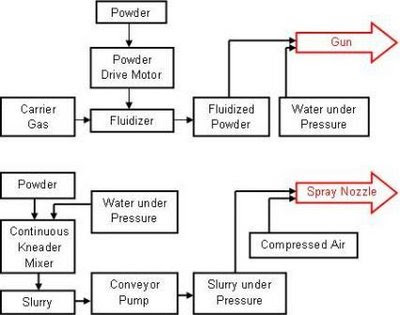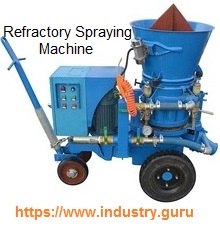21-July-2020
Kyanite is one of the
Alumino-Silicate group of minerals comprising Sillimanite, Kyanite, Andalusite,
Dulmortierite, Topaz and Mullite all with similar chemical composition but
different physical behavior and hence, uses. Kyanite, raw as well as
calcined, have separate applications as refractory raw materials because of
their distinct characters.
Raw Kyanite
 |
| Raw Kyanite (Refractory Grade) |
To be suitable for
refractory raw material, kyanite should have very negligible amount of
impurities which include free silica, alkali, iron oxides, calcium and
magnesium. Kyanite, Sillimanite and Andalusite all
these three minerals convert to Mullite and silica when they are calcined to
temperatures between 1250OC and 1500OC. The inversion
kyanite to mullite and silica (glass) begins at the periphery of grains and
this rate of conversion depends the following:
>> Particle size
>> Firing
temperature
>> Soaking time
>> Impurities
present.
The heating of raw
kyanite is accompanied with its volume expansion and a decrease in its specific
gravity from 3.6 to 3.06, which takes place over a small range of temperature
around up to 1350OC.
Because of this property raw kyanite -
Because of this property raw kyanite -
- Raw
kyanite is extensively used for making high alumina insulation bricks,
insulating mortars and castables.
- Raw
kyanite fines (pulverized) can be added to refractory mixes in different
proportions as a measure to control or compensate the overall shrinkage
due to other raw materials.
Calcined Kyanite
 |
| Calcined Kyanite (lumps) to be used in making Refractories |
In order to make it a
volume stable refractory material, kyanite is pre-calcined at 1420OC
to mullite and Cristobalite before use. Sometimes the lumps are very hard to
crush after calcination. To avoid this, after calcination the kyanite lumps
are, sometimes, quenched in water to make them crumble easily. Thereafter, it
is ground, graded into various fractions as per requirement. These grains of
calcined kyanite being volume stable are used with other raw materials for
making refractory bricks and castables. The various refractory properties are:
P.C.E - above 1785OC
or 35+ (Orton)
RUL (refractoriness
under load) - 1750OC
Porosity = 24 - 25%
Properly calcined
kyanite is a very good refractory raw material because of its high alumina
percentage and low iron contents. As compared to other refractory raw materials
kyanite can be sometimes, very handy for boosting alumina content and other
refractory properties of the product at the same time maintaining its cost
effectiveness.
Refractories made from
calcined kyanite possess:
- Higher modulus of rupture and creep resistance
- Lower co-efficient of expansion
- High thermal shock resistance
- Increased durability, about three times that of
ordinary bricks
- Superior resistance to salt attacks and chemical
corrosion
- Very low co-efficient of spalling











